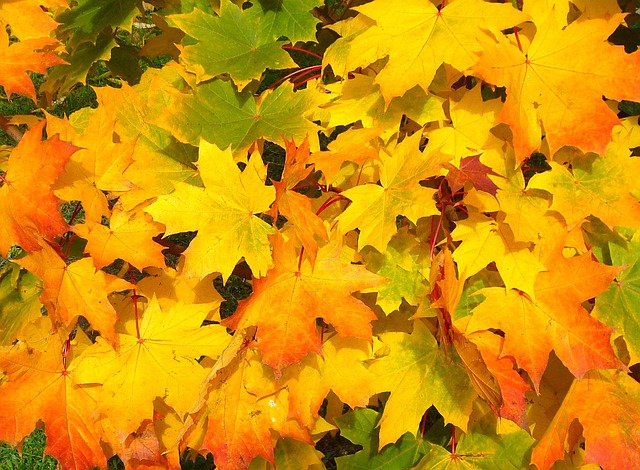The plant and animal kingdoms abound with bright colors, from the lush green of photosynthesizing plants to the striking colors of fluttering butterflies. Colors signal the harvest time, breeding conditions, and the change of seasons. Animals can also use their colors to camouflage, or to warn other creatures.
Pigments are chemical compounds that are responsible for many of the beautiful colors we see in the plant and animal worlds. Pigments absorb some of the light they receive, and reflect only certain wavelengths of visible light; color arises from the way the pigments react with light.
Lively Leaves
In plants, biological pigments selectively absorb certain wavelengths of light while reflecting others. The light that is absorbed may be used by the plant to power chemical reactions, while the reflected wavelengths of light determine the color of the plant as it appears to the viewer.
Chlorophyll is the main pigment in plants; it harvests light energy to be converted into chemical energy in the process known as photosynthesis. Chlorophyll is green to the human eye because of the wavelengths of light it absorbs during photosynthesis; it is effective at absorbing the red and blue wavelengths of light. As a result, it cannot absorb the green wavelengths of light very well; it thus reflects them.
Not all plants are green though; at least not all the time. In the Fall, leaves change color and can turn into various shades of orange, yellow and red. This occurs because chlorophyll is not the only pigment in a plant. There are also red and yellow pigments, known as anthocyanins and carotenoids, respectively. These pigments absorb green light and reflect red, or reflect just enough red and blue to create a yellowish orange color.

Plush Petals
People always admire the beautiful colors of flowers in bloom; unaware of the primary purpose of these vibrant colors, which is to attract pollinating insects to aid in the propagation of the plant.
Plants cannot move from one location to another; thus, many flowers have evolved to attract insects or animals to transfer pollen for them. Flowers that are insect-pollinated are of bright colors to attract bees, which are attracted to those bright colored flowers as a source of sweet nectar that they process into honey for food.
Flowers are colorful because they have different pigments that reflect light, producing different petal colors: anthocyanins generate red, purple and blue; flavones make pale yellow colors; while carotenes make red, orange and bright yellow.
In addition to plant pigments, pollination and even the environment impact the color of flowers. Some flowers change color as they grow, signaling to insects that the flower is aging and has passed the point of pollination. On the other hand, flowers growing in cooler climates tend to have more vivid colors, while those growing in warmer regions sometimes suffer from heat and water-deprivation resulting in fader colors.
*Published in PSC Newsletter, 2nd School Semester 2012/2013 issue.
References
webexhibits.org
hotword.dictionary.com
britannica.com
oceans.taraexpeditions.org
dailymail.co.uk
ehow.com
earthweek.com
incrediblethings.com
blog.lib.umn.edu
lifeslittlemysteries.com
whyzz.com
hiltonpond.org
sciencefocus.com